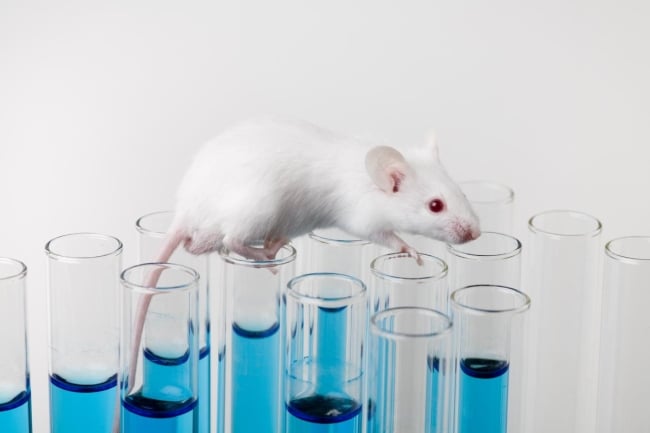You have /5 articles left.
Sign up for a free account or log in.

Istockphoto.com/dra_schwartz
Empty classrooms are a defining feature of the coronavirus crisis on college campuses. Empty research labs are another.
Many major research universities have halted all but essential research in what amounts to an unprecedented stoppage of academic science in modern memory. Among the universities that have shut down all nonessential research operations are Harvard, Johns Hopkins and Yale Universities, as well as the Universities of Michigan and Pennsylvania, among others.
Suzanne Ortega, president of the Council of Graduate Schools, a national organization focused on graduate education and research, said universities appear to be converging on a set of agreed-upon practices for research during the public health crisis.
“Those practices really involve trying to minimize social interaction but maintain what are called essential research functions,” such as certain experiments involving animals and ongoing clinical trials, she said. "There may be other examples of research that's deemed essential, but it appears that the practice is for campuses to evaluate those on a case-by-case basis and even for those that are deemed essential to try to minimize the number of individuals who are tending to the animals or caring for the experiments."
Some have questioned the wisdom of the shutdowns.
"Social distancing is crucial. But do we really need to shut down research labs? For some postdocs/young PIs [principal investigators] this could be catastrophic," Jonathan Kipnis, a neuroscientist at the University of Virginia, wrote on Twitter March 17. "Biomedical research isn’t ‘dispensable’ and there are alternative measures. Wearing protective gear? Dividing lab into non-overlapping ‘shifts’?"
Kipnis, who declined a request for an interview, subsequently asked in a second tweet what would happen if the shutdowns lasted for a year.
"Can you look in the eyes of all your trainees/staff and promise them that after a year of inactivity you can still fully pay their salary?" he asked.
The original tweet by Kipnis garnered 191 responses, many from people arguing that yes, the shutdowns are essential not just for the safety of researchers but also for that of others.
“I am one of these young PIs, and I am admittedly terrified about the consequences to my research program … but my research is NOT more important than protecting my community,” wrote Melissa Kane, an assistant professor of pediatrics in the Division of Infection Diseases at the University of Pittsburgh School of Medicine.
Kane, who studies immune responses to viral infections, said in an interview that she has frozen all the cell lines she can and regularly goes to her lab to attend to the lab’s mouse colony. An undergraduate research assistant has gone home for the semester, and her lab's two research technicians are working from home, though she said there isn’t a lot of work they can do from there.
“It took me months and months to get the lab set up, and I’m now looking at the possibility of redoing that, which is really scary with a small staff in particular,” Kane said. “It’s going to be a lot harder for junior people to get back up and running. On the other hand, a lot of other people are in that boat so I also feel rather fortunate that I study immunity to viral infections. Not this type of virus [the coronavirus] -- I study retroviruses like HIV -- but it’s something I don’t see interest waning in in the future, to be honest.”
The financial cost of halting research is another concern for junior lead investigators like Kane.
"I’m paying my technicians right now, and they are not working," she said. "But again, I actually didn’t find that choice all that difficult to make in the long run. I just think it’s 100 percent the right thing to do.”
The National Institutes of Health has said it will allow recipients of grants to charge for costs related to payment of salaries and benefits during periods in which research is not performed due to COVID-19 as long as the grantee’s institution allows such payments. The National Science Foundation similarly announced this week that recipients of grants “are authorized to continue to charge salaries, stipends, and benefits to currently active NSF awards consistent with the recipients’ policy of paying salaries (under unexpected or extraordinary circumstances) from all funding sources, Federal and non-Federal.”
However, the funding agency noted, “Recipients must not assume that supplemental funding will be available should the charging of such costs or other fees result in a shortage of funds to eventually carry out the project.”
Four major higher education associations -- the Association of American Medical Colleges, the Association of American Universities, the Association of Public and Land-grant Universities, and the American Council on Education -- sent a March 19 letter to congressional leaders asking for supplemental funding for research in the stimulus bill. The stimulus bill, which was signed by President Trump on Friday, included additional funding for COVID-19 related research, but did not include money associations had requested to help with costs related to shutting down and restarting labs. The associations noted a number of areas where COVID-19 is likely to cause unanticipated costs, including in relation to costs associated with salaries and benefits for graduate students, postdoctoral researchers, principal investigators and other research personnel whose salaries are funded by federal grants, as well as unanticipated costs associated with ramping down and ramping back up research.
Such ramp-down and ramp-up costs, the groups wrote, could include things such as loss or destruction of biological samples, disposal of hazardous materials, the care or replacement of animal subjects, and “restarting experiments that could not be completed due to the closure of research facilities, inability of personnel to interact in the field, or missed seasonal opportunities such as plant or animal life cycles.”
Sunny Shin, an associate professor of microbiology at the University of Pennsylvania, said that with new experiments suspended, her lab had to euthanize about 200 mice, more than three-quarters of her lab's colony. "We kept the minimum number of mice necessary to keep mouse lines going, as my lab has about 24 different transgenic and knockout mouse lines," said Shin, who studies immune responses to bacterial pathogens. "I estimate that this will set my lab’s research back at least six months, if not more, as we don’t know when we’ll be able to go back into our labs again."
Shin said she has a manuscript out for review and submitted for a renewal of an NIH grant, "so this will definitely affect our ability to address reviewers’ concerns," she said. "In addition, I have two senior postdocs who were planning on going on the academic job market, and they both need to do additional mouse experiments for manuscripts that they are preparing and were hoping to submit this spring. So I am very concerned that this will affect their careers."
Shin is holding virtual lab meetings with her postdocs and graduate students and trying to keep them engaged.
"I think it’s really important for the research to continue even from home," she said. "Things like data analysis, writing papers or literature reviews, reading research papers. I have a student who’s starting to write her dissertation. There’s a lot of work that can still be done from home."
She said the graduate students who work in her lab are "worried about the health of each other and their friends here in Philadelphia, and they’re concerned about how this is going to affect their research and their timelines. Some of them are senior graduate students who are in years four and five. During a time when they should be most productive in terms of doing lab work to make their way towards graduation, for some of them, this is obviously a setback. I've been trying to reassure them that having this time to read and think about their projects can be productive, too, that they shouldn’t worry about that too much.
"I’m trying to keep very positive and try to reassure everyone that obviously the health of our lab and our community is the more important thing," she added. "That’s more important than any kind of lab shutdown."
Sara Sawyer, a professor of molecular, cell and developmental biology at the University of Colorado at Boulder, is keeping open a line of activity at her lab that is focused on COVID-19 diagnostic testing. But she shut down the other areas of her lab, which focus on zoonosis -- the process by which viruses that typically infect animals jump to humans -- and studies other pathogens that haven’t yet made similar jumps.
Sawyer's lab is now operating with a skeleton crew as researchers focus all their work on the COVID-19 diagnostic testing. She said college administrators have had to make high-stakes decisions about shutting down laboratory work quickly with little precedent to guide their decisions.
"For those of us who work in tissue culture, we can freeze our materials and come back to them in two months, but you can’t freeze that mouse stock that you spent the last two years making," she said. "There’s only one way to propagate that resource, and that’s to take care of those animals and let them reproduce. Universities are having to make split-second decisions with very little history of experience in making such decisions. It's a slippery slope, too. If one lab gets to stay open or have a few people go in because they have animal research, what about the fruit fly lab? Does that count? You could go on and on just brainstorming the very complicated decisions that administrators have to make right now."








